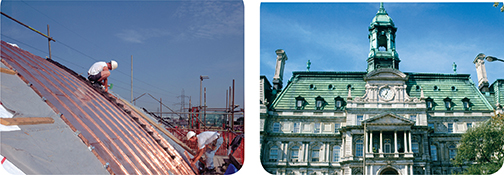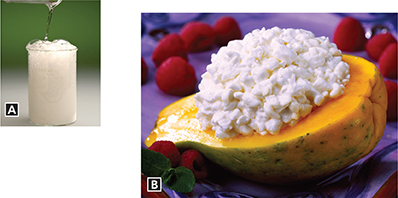Figure 19 When copper is exposed to moist air, it forms a thin coating called a patina. A new copper roof has a reddish color. The green patina on an old copper roof is a mixture of copper compounds.
Predicting Would a patina form faster in a rainy climate or in a dry climate?

A Change in Color
Over time, a shiny silver bracelet that is exposed to air will darken. As a match burns, it shrivels up and turns black. The new copper roof and the old copper roof in Figure 19 have different colors. In each of these examples, a change in color is a clue that a chemical change has produced at least one new substance.
Production of a Gas
Figure 20A shows what happens when you mix vinegar with baking soda. Bubbles of carbon dioxide form immediately. A similar chemical change happens when you use baking powder as an ingredient in a cake recipe. Baking powder is a mixture of baking soda and one or more acids that react when wet. As the cake bakes, the bubbles of carbon dioxide expand and cause the cake to rise.
Formation of a Precipitate
Another chemical change you can observe in the kitchen is the curdling of milk. If you add lemon juice or vinegar to milk, small bits of white solid will separate from the liquid. Any solid that forms and separates from a liquid mixture is called a precipitate. When an acid is added to milk, proteins in the milk undergo a chemical change that alters their structure, causing them to stick together in clumps. They form the precipitate shown in Figure 20B.

What happens when yo add vinegar to baking soda?
Figure 20 The formation of a gas or a precipitate can be a clue to chemical change. A Carbon dioxide gas forms when vinegar is mixed with baking soda. B The curds in cottage cheese form when an acid is added to milk.
 d
d



